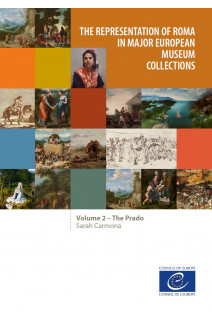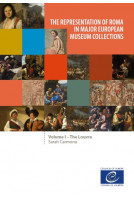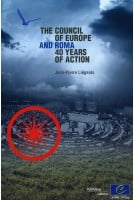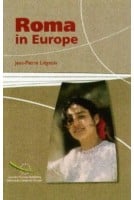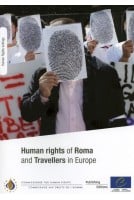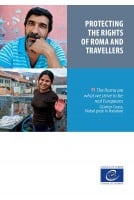What do works of art teach us from their period of creation? What do they teach us about human interaction, about social groups?
The Council of Europe is a key player in the fight to respect the rights and equal treatment of Roma and Travellers. As such, it implements various actions aimed at combating discrimination: facilitating the access of Roma and Travellers to public services and justice; giving visibility to their history, culture and languages; and ensuring their participation in the different levels of decision making.
Another aspect of the Council of Europe’s work is to improve the wider public’s understanding of Roma and their place in Europe. Knowing and understanding Roma and Travellers, their customs, their professions, their history, their migration and the laws affecting them are indispensable elements for interpreting the situation of Roma and Travellers today and understanding the discrimination they face.
This publication focuses on what the works exhibited at the Prado Museum tell us about the place and perception of Roma in Europe from the 15th to the 19th centuries.
Students aged 12 to 18, teachers, and any other visitor to the Prado interested in this theme, will find detailed worksheets on 15 paintings representing Roma and Travellers and a booklet to foster reflection on the works and their context, while creating links with our contemporary perception of Roma and Travellers in today’s society.
PREFACE THE HAYWAIN TRIPTYCH (1512-1515) Hieronymus Bosch (1450-1516)
REST ON THE FLIGHT INTO EGYPT (1518-1520) Joachim Patinir (1480-1524)
THE TEMPTATIONS OF SAINT ANTHONY THE ABBOT (1520-1524) Joachim Patinir (1480-1524), Quentin Massys (1465-1530)
THE HOLY FAMILY/LA PERLA (1518) Raffaello Sanzio (Raphael) (1483-1520), Giulio Romano (1499-1546)
THE VISITATION (1517) Raffaello Sanzio (Raphael) (1483-1520), Giulio Romano (1499-1546), Giovanni Penni (1496-1528)
THE TRIUMPH OF DEATH (1562-1563) Pieter Brueghel the Elder (1525-1569)
MULE TRAIN AND GYPSIES IN A FOREST (1612) Jan Brueghel Elder (1568-1625)
LANDSCAPE WITH GYPSIES (1641-1645) David Teniers II
GYPSY FAMILY (18TH CENTURY) Pietro Giacomo Palmieri (1737-1804)
AN AVENUE IN ANDALUSIA OR THE MAJA AND THE CLOAKED MEN (1777) Francisco de Goya y Lucientes (1746-1828)
THE FIGHT AT THE COCK INN (1777) Francisco de Goya y Lucientes (1746-1828)
THREE GYPSIES (1840) Genaro Pérez Villaamil y Duguet (1807-1854)
A GYPSY (1871) Raimundo de Madrazo y Garreta (1841-1920)
WHERE DO WE GO NOW? (BOSNIANS) (1884) Joaquín Araujo y Ruano (1851-1894)
THE CATTLE MARKET (SECOND HALF OF THE 19th CENTURY) Joaquín Araujo y Ruano (1851-1894)
FROM EPISTEMICIDE TO CULTURAL APPROPRIATION CONCLUSION: THE JUSTICE OF THE SINGULAR VERSUS THE TOTALITARIANISM OF THE TRUTHTHE CATALOGUE AND PHOTO CREDITS
